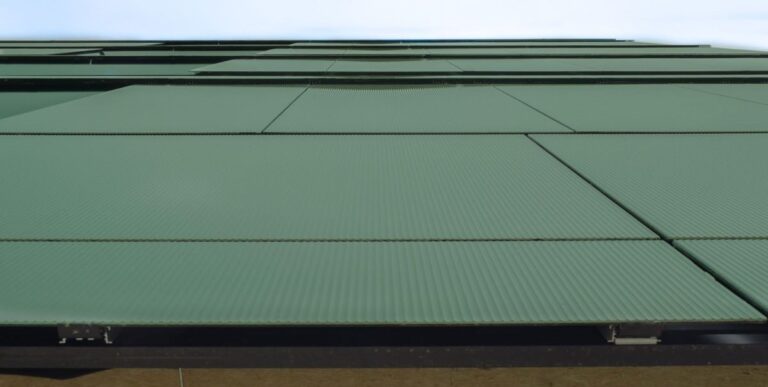A Swiss research team published an overview of the technologies used for the production of colored, integrated PV in buildings, discussing the competitive characteristics of more than a dozen products, as well as success factors to drive market development.
Researchers from the École Polytechnique Fédérale de Lausanne (EPFL) and the Swiss Center for Electronics and Microtechnology (CSEM) investigated colored crystalline silicon PV module technologies, suppliers and the success factors towards meeting the needs of architects and real estate developers with visual attractive building integrated PV (BIPV).
The methods manufacturers use to produce colored modules, along with the costs, challenges and benefits, were analyzed in the review. It was completed in the context of the team’s work on several other European Union and Swiss funded research projects, including recent work on a new BIPV illumination colorimeter for module manufacturers.
Color can be added to conventional PV modules in various ways, for example by using colored cover glass made via screen printing or digital ceramic printing. Manufacturers can use colored polyvinyl butyral (PVB), ethylene vinyl acetate (EVA), or polyolefin elastomer (POE) encapsulants. They can add semi-transparent active layers, structured coatings, patterned self-adhesive films attached to the cover glass, or directly to the cells during production, or even add color to modules in a post-production step.
Some of the manufacturers using these techniques are profiled by the research team, including European companies such as Kameleon Solar, Kromatix, Megasol Energy, Onyx Solar, 3s Swiss Solar Solutions and Freesuns. They use color techniques from Solaxess, Kromatix and Glas Trösch, among others. Others mentioned include US-based Sistine Solar and China-based Advanced Solar Power. A total of sixteen BIPV color technology suppliers have been profiled with details on products, power density, estimated power losses and indicative pricing.
Standardization and other success factors
Standardization is one of the challenges for BIPV technologies, colored or not. It is a threefold challenge because the panels must not only meet IEC standards, but also building standards, such as EN 135011, and safety glass standards. Because colored BIPV involves companies from both the PV and glass industries, some additional collaboration may be required.
“From our view, it should be a joint effort between all PV and building stakeholders, especially PV module manufacturers and facade manufacturers, both of which use safety glass. This joint effort will make it possible to increase the supply and volume and reduce the costs of colored PV facades,” said Swiss researcher Antonin Faes. pv magazine.
The researchers emphasize that BIPV can compete on cost with traditional high-performance building cladding materials, as an alternative cladding that offers the added benefit of electricity generation.
The review included a discussion of success factors, such as reliability and stability of color solutions, safety, and methodologies for quantitative color characterization. For example, it recommends that new encapsulants and coatings be ‘scrutinously tested’ to ensure that color changes or other forms of degradation do not occur, as well as to ensure safety against fire hazards.
Some of the other success factors include targeting mid- and low-rise buildings and considering the impact on the bill of materials and installation processes early.
In conclusion, the team noted the need to continue to address power loss concerns associated with colored PV, but concluded with a positive view of the “overall environmental and economic benefits” of BIPV and its potential to increase the available surfaces for energy production to increase.
Looking ahead, Faes said the group has seen an increase in interest in colored BIPV recently, noting that it has been ten years since CSEM released the first white PV module. “The subject is very interesting because it takes place on the border between the objective productivity of PV systems and the subjective emotional representation of the architect,” says Faes.
The overview is available in the study “Color solutions for building integrated photovoltaic modules: an overview,” published by Energy & Buildings.
Image: by Megasol Energy
This content is copyrighted and may not be reused. If you would like to collaborate with us and reuse some of our content, please contact: editors@pv-magazine.com.


